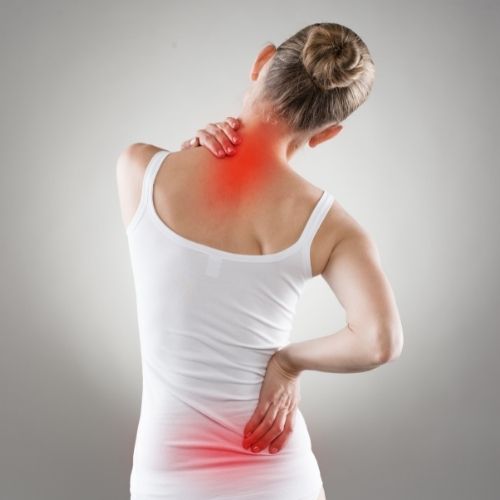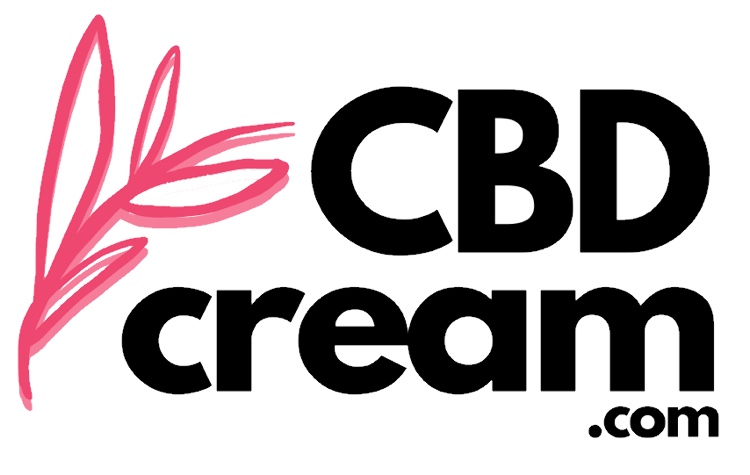Everyone has pain, so we all need pain relief. No wonder cannabidiol (CBD), the non-intoxicating cousin of tetrahydrocannabinol or THC that occurs naturally in the Cannabis sativa plant, is trending. CBD is a great option for pain relief, although some CBD products are far superior to others.
In this post, we’ll cover the connection between topical CBD and pain, why to use CBD topicals and how they help pain, some of the benefits and drawbacks of CBD cream for pain, and what to look for in a CBD cream.
Remember, seek advice from a healthcare provider before altering your course of treatment or starting anything new.
So How Does CBD Cream Help Pain?
As of 2016, the Centers for Disease Control and Prevention (CDC) said about 20.4 percent of Americans or 50 million US adults were living with chronic pain such as back pain or arthritis. The Food and Drug Administration (FDA) is currently focused on the parallel crisis of opioid addiction.
The reason CBD is an option for treating that pain is that the endocannabinoid system (ECS) manages how the body processes pain and manages inflammation. This makes CBD and other phytocannabinoids that interact with the cannabinoid receptors in the ECS after being extract from the hemp plant a natural choice for treating pain.
CBD has analgesic, anticonvulsant, antioxidant, sleep-enhancing, neuroprotective, and anti-inflammatory properties. Research supports using CBD products to treat arthritis and joint pain and inflammation, acne and other skin issues, pain from multiple sclerosis and fibromyalgia, scleroderma, inflammation from colitis and other issues generally, and for broader pain management.
If that makes it seem like CBD is too good to be true, keep in mind that nature is the source of the most potent medicines humanity has discovered. As the formulations of the best topical CBD creams for pain establish, the whole plant science of the entourage effect and CBD working together with other hemp or cannabis plant compounds is where the magic happens.
In nature, the hemp plant contains at least trace amounts of the whole rainbow of cannabinoids and terpenes, including THC, but also CBN, CBC, CBG, and CBD, as well as other natural plant components. These all work together with CBD, to both reduce some of the worst side effects from THC and improve its efficacy.

To better understand the health benefits of CBD topicals, here is a brief summary of how the cannabinoids and terpenes work to support wellness and treat certain medical conditions:
- Cannabichromene (CBC) may treat acne and could treat or prevent pain and inflammation.
- Most CBDV research looks at seizures, and scientists think this cannabinoid is similar to CBD in terms of their effects on the skin.
- CBG may work as an antibacterial agent including against MRSA, and could decrease inflammation from inflammatory bowel disease.
- CBN is also an anti-inflammatory, and may help keep the skin clean and smooth as a powerful antibacterial agent.
- Although most cannabinoids interact with the endocannabinoid system by binding directly with either the CB1 or CB2 receptors, Cannabidiolic Acid (CBDA) is unique because it inhibits the COX-2 enzyme. This leads researchers to think that CBDA may offer inflammation and pain relief, because it blocks the COX-2 enzyme which is associated with inflammation from infection and injury.
Terpenes are plant chemicals that create scents such as orange, rose, or pine. CBD topicals, especially those that are full-spectrum or broad-spectrum, make good use of them:
- Myrcene may have analgesic, antimicrobial, and anti-inflammatory benefits and lends its aroma to basil, cardamom, clove, hops, lemongrass, thyme, and most famously, mango.
- Caryophyllene binds with the CB2 receptor to interact with the body’s endocannabinoid system to act as an antibacterial, including for certain resistant strains, act as an anti-microbial, act as an anti-inflammatory, repair tissue, and treat pain. This terpene creates the scents you find in black pepper, cloves, cinnamon, oregano, hops, rosemary, and other edible herbs and green, leafy vegetables.
- Limonene may act as an anti-inflammatory and it also tends to lift the mood. It lends its fragrance to fruits and plants like grapefruits, juniper, lemons, limes, mint, oranges, and rosemary.
- Linalool offers both gram positive and gram negative antibacterial benefits and anti-fungal/antimicrobial benefits, particularly against Candida. It is perhaps even better known, however, for its soothing lavender aroma and propensity to induce relaxation.
- Pinene offers a piney smell as well as the aroma of basil, dill, parsley, or hops, but it also acts as an anti-inflammatory and a topical antiseptic.
- Nerolidol offers antioxidant and anti-inflammatory benefits and could improve the penetration ability of topical drugs. Nerolidol is found in jasmine, ginger, lemongrass, lavender, tea tree, and (of course) neroli.
- Humulene offers antibacterial and anti-inflammatory benefits. This terpene is found in basil, hops, clove, black pepper, coriander, ginseng, ginger, sage, and certain types of wood.
- Found in conifers, Guaiol offers antioxidant, antimicrobial, and anti-inflammatory benefits.
- Bisabolol offers analgesic, anti-inflammatory, and antioxidant benefits. This terpene is commonly found in German chamomile and the South American candeia tree.
- Valencene offers a number of benefits including treating dermatitis and acting as an anti-inflammatory. It is found in citrus such as the Valencia orange.
- Phytol is well-studied for its antinociceptive effects, as an anti-inflammatory, an antioxidant, and an analgesic. This terpene is found naturally in both green tea and cannabis as chlorophyll degrades.
When all of the terpenes, cannabinoids, and other phytocompounds in cannabis or hemp are allowed to work in the body together, they produce something called the entourage effect. The entourage effect enables the body to experience optimal benefits
from the whole plant and all of its terpenes and cannabinoids, along with other botanicals in a particular formulation.
Remember, though, even full-spectrum CBD oil products cannot produce any “high” feelings or intoxication. However, if this is a concern to you, a broad-spectrum CBD lotion or cream might be a better option. Or, look for a pain relief cream made from CBD isolate, which will produce the effects of CBD, but no other cannabinoids.
Benefits of CBD Topicals
The best reason to use CBD topicals is obvious: quality products really help nourish and care for your skin at the next level. If your pain problem is related to the skin, or if you just have a skin issue and also pain, there is often no better approach. For example, many people hoping to treat psoriasis or eczema find relief with CBD skincare products.
Another great reason to try topical application of CBD for pain is if you have reasons to avoid consuming CBD in other ways. So if smoking if off limits for you, or if you have gastric issues, or other problems that make consuming CBD gummies or other products tricky, transdermal consumption might be safer.
CBD creams and topicals are also convenient, and inconspicuous. In fact, using topicals is a great way to keep the secret, if you need to, on the go. And don’t forget, these are actually very high-quality, over-the-counter products that can tremendously benefit the skin.
The best CBD creams for pain offer excellent, temporary relief of pain associated with arthritis, backache, bruises, strains, and sprains. And the right blend of terpenes in a CBD cream is refreshing yet relaxing for the skin and mood.
Almost all high-quality CBD creams offer some ingredients that soothe and soften the skin. For example, beeswax, hemp seed oil, olive oil, aloe vera, coconut oil, and shea butter all nourish the skin.
- great for the skin
- strong, localized relief
- safer for non-smokers, non-vapers, and those with GI issues
- inconspicuous, convenient
Disadvantages of CBD Creams and Topicals
The biggest disadvantage to CBD creams is basically cost. When you do the math on the price and factor in reduced bioavailability—and compared with CBD oil, CBD tinctures, CBD edibles, and CBD vapes, topicals are less bioavailable—your dollar doesn’t stretch quite as far.
Of course, this is no longer true if you are treating the skin specifically, or a joint or muscle that is more responsive to treatment with topicals—like CBD cream.
It’s also more difficult to dose CBD creams effectively without a bit of trial and error, but to some extent that’s really true of any CBD products. To sum it up:
- expensive
- reduced bioavailability
- more useful for pain related to skin, joints, or muscles, and skin specific treatment, less for other issues such as mood
- difficult to calculate dosage
What To Look For in a CBD Cream
These are some of the most important considerations when you’re shopping for a CBD cream for pain:
Brand reputation: How long has this company been around? How big are they? Sometimes this is important, but newer, smaller brands often hit the market with something fresh and amazing. Always look for actual customer reviews to get the low-down on this.
Quality control: According to the certificate of analysis or COA for the CBD cream, anything you consider should be organic and non-GMO and pass tests for pesticides, heavy metals, and molds. Look for third-party lab testing results that are easy to find, recent, and comprehensible.
Extraction method: In general, ethanol extraction and CO2 extraction are optimal compared with butane extraction and other, less-favored methods. Spruce CBD products offer a unique riff on how they extract CBD from the hemp plant: moonshine extraction. But don’t worry about any lingering moonshine. With this technique they create a completely filtered, full-spectrum hemp seed oil.
Hemp source: The first choice here is always United States grown hemp, followed by Dutch. Within the United States, hemp is grown in multiple places, but very often in Colorado and Kentucky. There is high consumer demand for hemp from sustainable farms that are safe for workers, especially those that are family-owned and operated.
Strength/potency: This should balance value and personal preference. Topical hemp CBD products usually vary in how many milligrams of CBD they contain per ounce.
Type of hemp extract: Full-spectrum CBD products or whole hemp plant extract products do contain THC, but less than 3 percent; broad-spectrum extract contains the full spectrum of cannabinoids except for THC; CBD isolate is pure CBD alone.
Other ingredients/overall experience: How will this react with your skin? Do you enjoy it?
When it comes to terpenes, how does this product seem to you? Are there noticeable or therapeutic levels of limonene, caryophyllene, linalool, geraniol, or other floral, spicy, fruity notes? Terpenes pull double duty, relieving pain as they improve the mood by uplifting and relaxing. Make sure you see which terpenes are in that CBD cream.
Some preparations contain essential oils and other ingredients intended to soothe or calm the skin, promote pain relief, and support the joints in particular, such as arnica, bergamot, menthol, camphor, or peppermint. Many of these botanicals do have science-backed anti-inflammatory and pain-relieving effects: arnica, for example does relieve inflammation. Some like menthol and eucalyptus have dsitinct scents; for many this is pleasant, but for others, who prefer an unscented product, this is something to avoid.
These kinds of CBD creams can cool the skin on contact, and in some cases that feeling can last. This may be a plus or a minus, depending on your preference.
If you’re going to use a CBD cream for pain, it will works a lot like other topical analgesics. You just use it right where you need quick pain relief to happen. It’s not taking an ibuprofen for a sore muscle; it’s more like using a medicated muscle rub.
Some CBD products, whether they be creams, salves, balms, ointments, or lotions, contain other herbal formulas with anything from vitamin E or capsaicin for anti-aging, inflammation, and pain to lavender and ylang-ylang for those who like something flowery.
CBD cream for pain is perfect for spot relief, swelling in the joints, and for rubbing achy shoulders and necks. And the right mix of therapeutic cannabinoids, botanicals, and terpenes deliver a uniquely powerful, yet pleasant form of pain relief that penetrates muscle, joints, bone, and ligaments.

So, how do CBD creams treat pain? Actually, pretty effectively if you choose the right product and you’re targeting the right issue. CBD topicals have a lot of potential when it comes to treating pain, and the best ones on the market are way beyond the rest.


